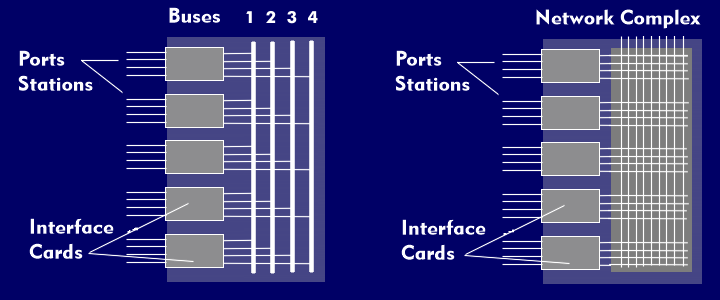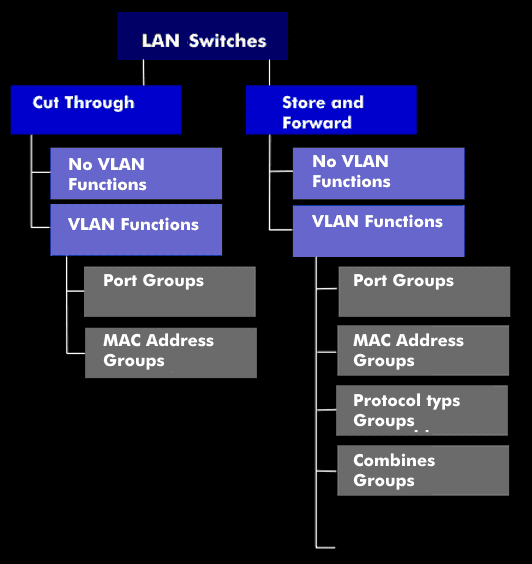LAN switch
LAN switches operate on the basis of MAC standards such as Ethernet, Token Ring and FDDI and are characterized by a high port concentration. They have a high bandwidth and enable direct end device connection. The full LAN capacity is available per port: 10 Mbit/s or 100 Mbit/s for Ethernet, 16 Mbit/s for Token Ring and 100 Mbit/s for FDDI.
LAN switches work in a hardware-oriented manner, usually with ASICs (Application Specific Integrated Circuit), which makes it possible to realize the significantly higher throughput rates compared to bridges. The actual switching matrix can be bus-oriented or a crossbar switch. In the former concept, the switches have multiple buses and the stations are connected to the ports of the interface cards, which in turn are connected to all buses. In the crossbar concept, the interface cards are connected to the switching ports.
LAN switches are used for communication between LAN segments and provide a multiple of the previously available transmission bandwidth. In a 6-port LAN switch to which three servers and three LAN segments are connected, up to three independent communication paths can thus be established between one server and one LAN each. If all three communication paths are used simultaneously, the transmission rate corresponds to three times the throughput. For example, if three Ethernet segments are connected, this results in a total transmission bandwidth of 30 Mbit/s.
LAN switching is categorized into cut-through, store-and-forward and matrix switches.


